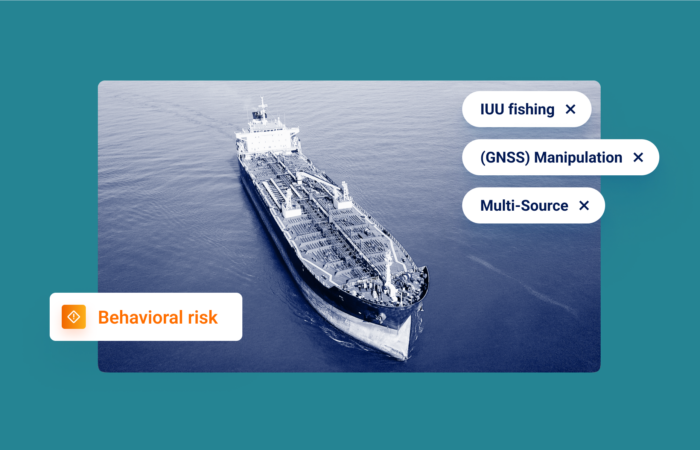High-Risk Fishing Vessel Visits to Indian Ocean Surge 145%

What’s inside?
Most vessels follow predictable and recurring routes – law-abiding ships usually have no reason to act in an uneconomical or illogical fashion, and bad actors will go to great lengths to disguise their illicit behavior. A deviation from the normal course of action or known conduct is likely to raise a red flag and potentially attract unwanted scrutiny by law enforcement, potential trading partners, etc.
But with the entire maritime and supply chain ecosystems disrupted due to geopolitical upheaval – causing all maritime actors to shift and change their tactics to adapt – bad actors are emboldened. Put simply, illicit activity becomes easier when chaos reigns.
The Houthis attacks in the Red Sea have created a major shakeup for global trade routes. Certain routes were abandoned, others are taking their place, and new bunkering hubs have emerged.
Two quick examples of the new reality:
There has been increased traffic around The Cape of Good Hope, which is a known smuggling route for Russian oil. Unlike the Suez Canal, the Cape does not have checkpoints. Diverting a large number of ships there, rather than the regulated Red Sea, may make illicit activities – such as illegal, unreported, and unregulated (IUU) fishing and its accompanying haul smuggling – easier.
A common question has been, “Is it safer to turn off a vessel’s AIS to avoid Houthi attacks?” With an increase in otherwise law-abiding vessel crews choosing to disable their AIS to avoid Houthi targeting, it will become harder to use dark activity as a marker for potential criminal activity.
An Explosion in IUU Fishing
Against this backdrop, we can see how illicit actors are taking advantage of the situation for IUU fishing – and the human rights violations that are often associated, such as forced labor.
Based on Windward’s illegal, unregulated, and unreported (IUU) fishing risk model, more than 536 high-risk fishing vessels visited territorial waters, canals, and straits for the first time ever in 2023.
They deviated from their usual behavior and encroached onto new areas. Many of these vessels went to fish in the Indian Ocean, which saw the highest number of fishing vessels entering it for the first time.

This year alone (and it’s only February), there were 430 additional high-risk fishing vessels, mostly Chinese, crossing Malacca for the first time and entering the Indian Ocean – a 145.5% increase compared to the 165 vessels doing the same in 2023!
In an expected correlation, tankers marked as “high risk” for suspected forced labor violations entered the Indian Ocean for the first time on 49 occasions, compared to only nine last year – a 444% increase. In total, vessels flagged for suspected labor violations made 120 first-time visits to new areas last year.

Geopolitical turmoil has always been a driver of changes in illicit behavioral patterns and the current situation is no exception. As the world follows the Red Sea crisis and, to a lesser extent, the continued conflict between Ukraine and Russia, illegal fishing is expanding in scale and scope – with many vessels moving into new territories.
Bad actors are quick to exploit uncertainty and disorder. Currently, they may be thinking that everyone is so focused on the Houthis and supply chain disruption, that illicit behaviors in other parts of the world are more likely to go unnoticed.
Fortunately, new behavioral anomalies can be detected using Windward’s AI-driven models. First-time visits in new geographies constitute an anomaly that is flagged in Windward’s platform, allowing users to scrutinize and monitor such events.
Windward’s Maritime AI™ technology quickly and automatically detects deceptive fishing practices. Our IUU behavioral model was created by studying known IUU fishing cases, analyzing the behavioral components, and then taking commonly repeated indicators and using them to build an artificial intelligence behavioral model.












